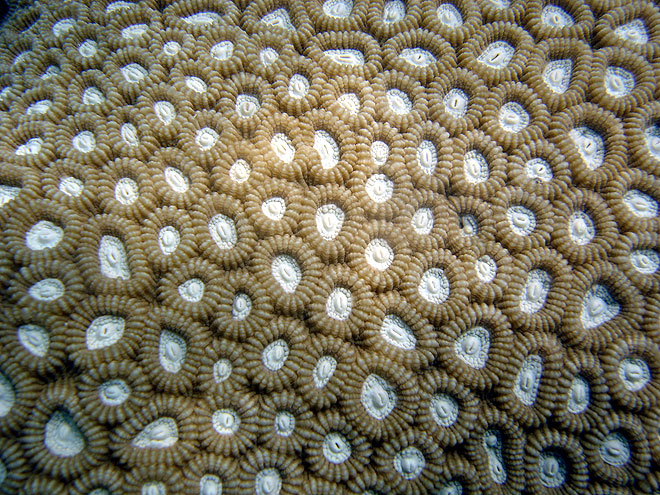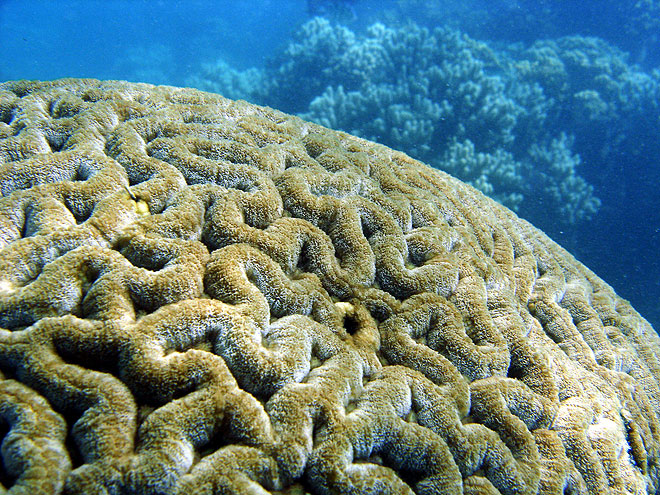Found in warm, shallow water environments at the Great Barrier Reef and around the world, the cerebral looking brain coral lends a sci-fi atmosphere to its watery world below. These interesting looking organisms have been known to live to 900 years of age, and can grow as tall as six feet.

Each brain coral is formed by genetically identical polyps which secrete a hard exoskeleton of calcium carbonate. This makes brain coral one of the most important coral reef builders.
In feeding, these brainy corals extend their tentacles at night, which rope in small drifting organisms. They also feed off nutrients fed to them by algae which live within their maze-like walls. In the daytime, the brain coral uses its tentacles to cover the grooves on its outer surface.
The most common sub-species of brain coral, Favia, is also known to use its rangy tentacles aggressively, stinging its coral neighbours in the dead of night. The brain coral also relies on its hard shell to protect it from severe hurricanes and lunging or overexcited large fish.

Its hard outer shell, built by the tiny polyps that live within its walls, make it a type of stony coral. Hundreds of these polyps can live within a brain coral at one time.
The polyps have two layers – an outer ectoderm and an inner endoderm, which are separated by a jelly-like mesogloea. They also have a single opening which acts as both mouth and anus, which is surrounded by a ring of tentacles containing stinging cells or ‘nematocysts’.
